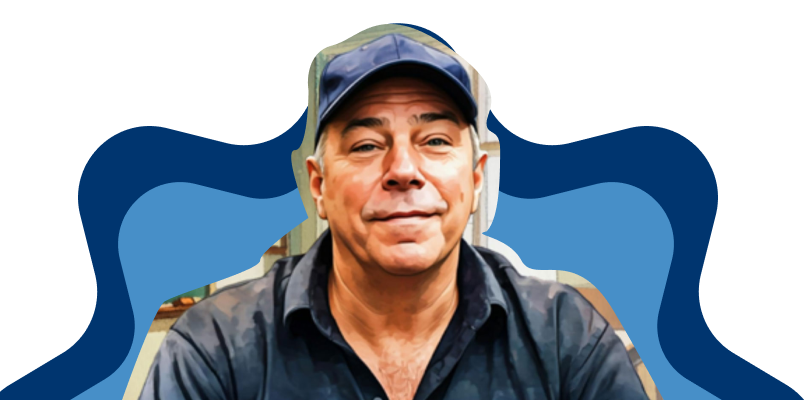Today is my first day back to work for the 2021-2022 school year.
I know some teachers have already returned to work, and others don’t return until after Labor Day, but this tends to be the time of year when my brethren put aside their summer delights and return to the classroom.
I wish them all the best of luck in what will surely be another challenging school year. The pandemic has not yet released its hold upon us. If anything, it’s more dangerous than ever before, particularly for those who work with children too young to be vaccinated.
I hope my fellow teachers and their administrators know this.
Happily, I live in a state where mask and vaccine mandates are expected and relatively unchallenged mitigation practices. I’m not sure what this will mean in terms of the delta variant, but it’s certainly better than living in a state with a governor and a populace that rejects science in favor of stupidity, spite, and political expediency.
If you’re a teacher in a district that isn’t protecting you and your students adequately, I’m so sorry. It’s inhumane and irrational behavior.
You’re not being treated as a valued professional.
Having now worked with many corporate clients over the last few years, I’ve begun to see the differences between professionals in the teaching realm and those in other fields who have the same level of education and experience as teachers.
Things like:
Depending on where a teacher works, a lack of a climate controlled workspace. My classroom, for example, can reach temperatures as high as 95 degrees in early September and June, which would never be permitted in other professional environments.
I know this because administrators are almost always working in climate controlled workspaces.
We’d never think of having an administrator work in 95 degree heat, nor would we expect parents and other outside visitors to be subjected to that kind of heat. That would be… well, unprofessional.
But teachers? Students?
Different story.
Here’s another:
For many teachers, there is also the inability to use a restroom when needed. Unless you are willing to turn your back on two dozen kindergarteners (or two dozen teenagers, for that matter), a teacher must wait – sometimes for an hour or two at a time – until they can find someone to watch their students while they pee.
No other professional who I know suffers the inability to use a restroom on a timely basis.
Here’s a crazy one:
Even though a teacher may have 45 minutes or even an hour for lunch, some administrators won’t allow teachers to leave the building to pick up a sandwich or swing through a drive thru or decompress in a nearby coffee shop for 15 minutes during their lunch break. They are required to remain inside the school, even if they are not supervising children in any way or have any other professional responsibilities.
These inane policies are enacted by former teachers turned administrators who treat their staff like the children they once managed rather than grown-ass adults. I’ve only suffered briefly with one of these fools, but I know teachers for whom this has been a reality for most of their careers.
Here’s another crazy one:
I don’t know a teacher who doesn’t spend their own money outfitting their classroom or supplying their students with basic needs. I am vehemently opposed to such a practice, believing that if teachers continue down this path, nothing will ever change. Still, even I occasionally spend money out of my pocket to equip my students and my classroom with necessary supplies from time to time.
I have questioned most of my corporate clients about their need to spend their own money on supplies, office furniture, and the like.
They all looked at me like I was crazy.
Because it’s crazy.
Here’s the good news:
Teachers get to work with kids. We spend our days in the presence of young people. We have the opportunity to change the life of a child forever. We have the power to do what so many teachers did for me:
Afforded me a path out of poverty.
Gave me hope for the future.
Equipped me with the tools I would need after graduating high school.
Helped me make my dreams come true.
Teachers like Mrs. Dubois, Mrs. Schultz, Lester Maroney, Mrs. Carroll, Marc Compopiano, Mr. Beane, and many more. I try to speak their names as often as possible to honor all that they did for me.
Teaching is also the single greatest economic driver in our country. Though specific dollar figures are almost impossible to assign to the result of the work we do, just imagine a world where public education is nonexistent.
The amount of GDP generated from the work of teachers is astounding, particularly when you factor in the salaries of teachers in comparison to most professions with equivalent levels of education and experience.
Take away a company like Apple or Google or Ford or Walmart and the world would admittedly be a very different place.
Take away public education and it’s not even comparable. Not even imaginable. You no longer have an Apple, Google, Ford, or Walmart, or if they exist, they are much smaller and poorly staffed.
If teachers were ever able to place a dollar value on the results of the work we do, we’d all need to be paid a small fortune.
Instead, we get to earn a living and change the world.
Good luck, my fellow teachers. If you’re anything like my colleagues, you’re most assuredly overworked, underpaid, and extraordinary.
You probably spent enormous numbers of unpaid hours this summer, sweating in classrooms, preparing a beautiful space for your students. You’re probably worried about teaching another year in this pandemic. Maybe nervous about occupying a room with two dozen unvaccinated human beings. Frightened about your health and the health of your students.
All understandable.
Be safe.
Stay positive.
Support one another.
Give your students reasons to laugh.
In the words of my friend, Steve, “Teach ’em.”









